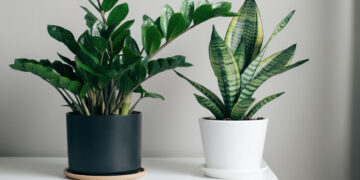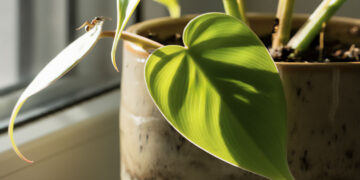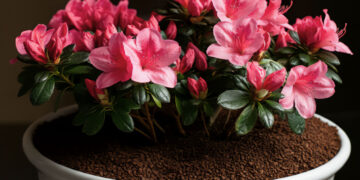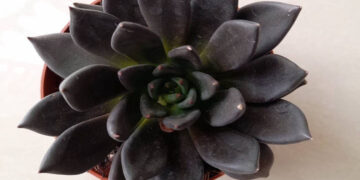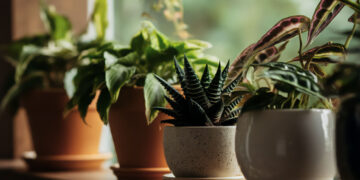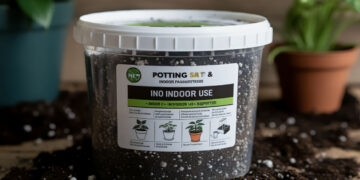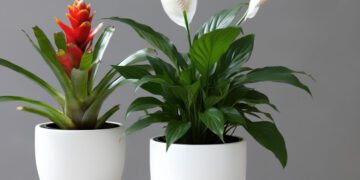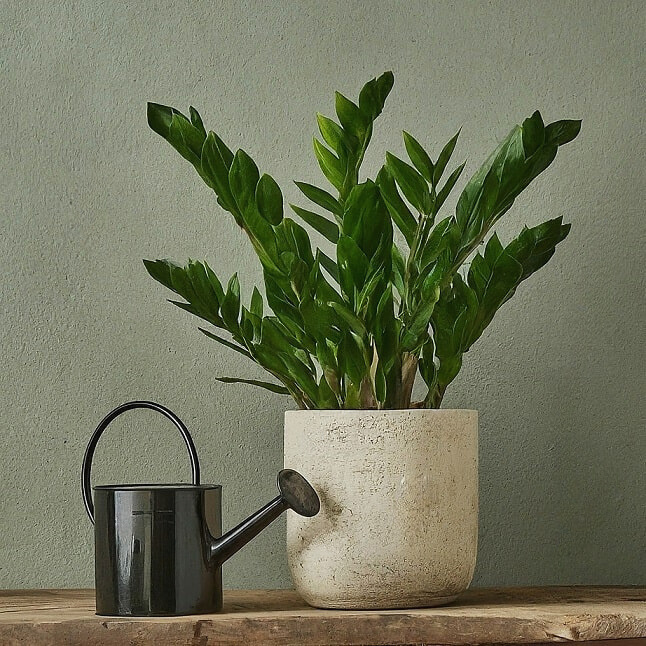
To start with, it is essential for the health of the ZZ plant, or Zamioculcas zamiifolia, to be aware of its watering requirements. The following article will give you important suggestions on how to maintain its lively appearance.
Here, the key question that might arise for you is: How often to water a ZZ plant? The exact answer to this question is to water a ZZ plant every two to three weeks, letting the soil dry fully in between watering. Additionally, adjust the frequency in accordance with seasonal variations and light exposure. Water slightly more frequently in warmer weather and brighter light.
Two Approaches for Giving a Grateful Drink to Your ZZ Plant
Bottom watering
The best way to water ZZ plants is from the bottom up, as this promotes deep root growth and lowers the chances of fungal diseases and leaf rot. To efficiently use bottom watering, set the pot in a shallow dish of water. Let the plant take up water from the bottom until the soil is moist on top. Additionally, to avoid overly wet conditions, remove any extra water.
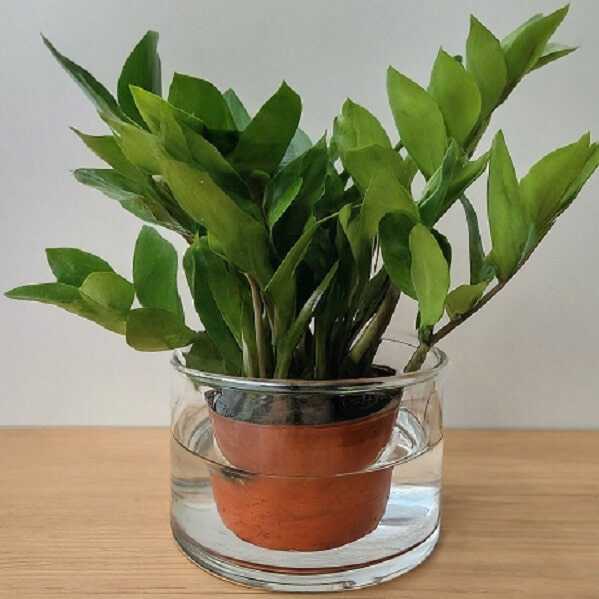
Top watering
Even though bottom watering promotes deep root growth, top watering, like taking a shower, is also important, especially for eliminating accumulated salts and minerals that bottom watering does not handle. To prevent puddles, make sure water is spread uniformly throughout the soil and given enough time to drain completely.
To ensure that your ZZ always gets the ideal drink, consider the following additional advice:
Water Quality
For your ZZ plant, ordinary tap water can be a little too harsh. Instead, to prevent any unwelcome chemicals from accumulating in the soil and burning the leaves, use filtered or bottled water.
The optimal water temperature is room temperature
Regard your ZZ as a friend with precise tastes in stuff. Do not use cold water as this can shock the roots and cause them to grow more slowly. Choose water that is the same temperature as the room instead.
Watering Your ZZ Plant All Year Long
ZZ plants have varying needs according to the season, just like humans do. Here’s how to ensure that they feel satisfied all year long:
Spring and summer drinks
Your ZZ is growing during these months, so feel free to give it a drink a little more frequently. Just keep in mind that the soil should always dry out completely in between waterings.
Cooler months
Winter and autumn are your ZZ’s relaxation periods. Watering can be significantly decreased during this period. Consider it as providing a comfortable hibernation for your plant!
How to Recognize Whether Your ZZ Is Thirsty?
This doesn’t require any pricey equipment! Simply examine the leaves and act like a plant detective. ZZ leaves in good health are firm and have a vibrant green color. It could be time for a drink if they begin to appear droopy or discolored.
You can significantly enhance the development and health of your ZZ plant by implementing these precise watering techniques and changes.
Find the ideal care schedule that encourages strong development and resilience for your plant by adjusting these techniques to its unique requirements and surrounding circumstances.
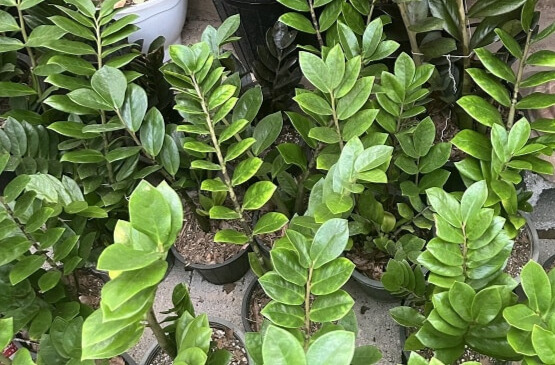
You might also like: Easy ZZ Plant Care Guide: Thrive with Minimal Effort
ZZ Plant Might Be Having a Watering Wobble
Your ZZ plant may be suffering from inadequate watering if it appears a little strange. Learn how to solve problems about plants and make your ZZ feel its best accordingly as follows!
Signs Your ZZ is a Little Too Soggy and you are overwatering them
Yellowing leaves at the base of the plant, musty-smelling soil, and a damp substrate all point to overwatering. Remedial actions include utilizing pots with enough drainage holes, decreasing the frequency of watering, and improving soil drainage with additives like perlite.
On the other hand, droopy, crunchy leaves, stunted growth, and dirt peeling away from the pot’s edges are indications of underwatering.
Increase the frequency of your waterings gradually so that the soil is thoroughly saturated and has time to dry between applications.
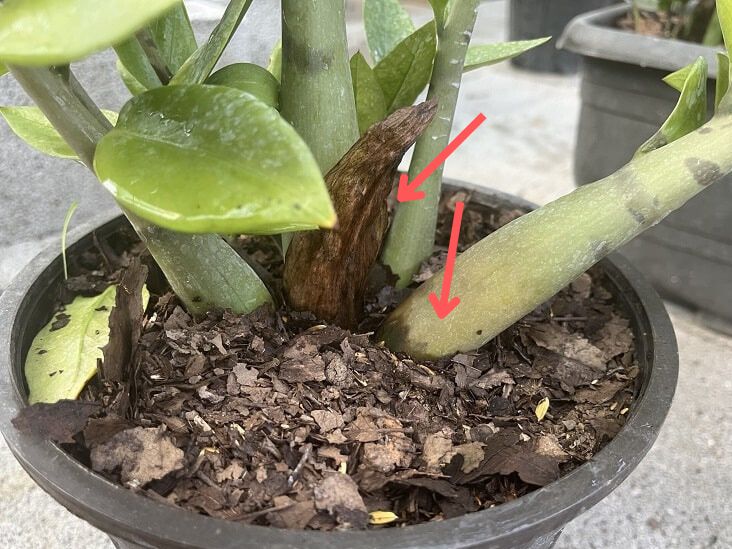
Root Health and Systematic Inspections
Your plant should be carefully removed from its pot every few months so you can look at the roots. White or light brown, plump, healthy roots are what you need to see.
The presence of dark and crumbly roots or mushy, black roots signals that something is wrong.
But don’t be concerned! you can improve the health of your plant. by Simply cut off any damaged roots with a soft pruner and grow your plant over in a new container filled with excellent, well-draining soil. Next, adjust the frequency of watering your plant according to your observations.
Optimizing Water Uptake and Environmental Adjustments
Keep an eye on the rate of water absorption; slow drainage could be a sign of compacted soil or insufficient aeration.
Water movement and root oxygenation can both be enhanced by aerating the soil. Furthermore, take into account the type of pot-clay pots allows for faster evaporation than plastic, which influences the amount of water required.
To maintain the proper levels of moisture, modify your strategy due to these considerations.
Humidity control and graded watering
Use a graded watering strategy, changing the watering quantity according to the phase of growth of the plant, the season, and any obvious indicators of stress.
Watering should be increased during times of active development and decreased during rest. Use a humidifier or put water trays next to heating systems in low-humidity areas to raise the general moisture level.
This will help your ZZ plant thrive in a more stable environment and reduce the risk of the soil drying up quickly.
You can tackle present watering problems and provide a strong foundation for continued plant care by combining these tactics.
This all-inclusive method guarantees that your ZZ plant will stay healthy, happy, and well-hydrated under varied growth phases and environmental circumstances.
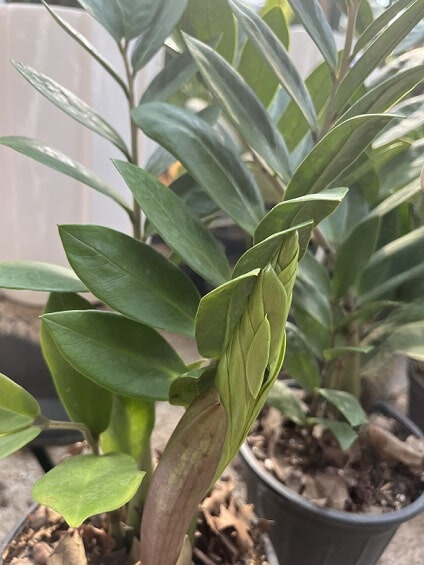
If you have any questions that I can help answer, or if you’d like to share an experience with readers, please feel free to comment below.

